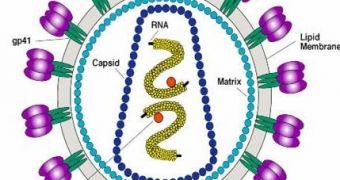On one hand, vaginal sex is the main entrance gate for the HIV into our bodies; on the other hand, women in many countries (like Sub-Saharan Africa) have little control on imposing safe sex (read condom use).
That's why this new research made at the UT Southwestern Medical Center, U.S., could save millions of lives and hamper the HIV epidemics: antivirals currently used against HIV infection in adults can impede the vaginal transmission of the deadly virus.
By investigating in human/mouse chimeras, the team found found that anti-retroviral chemicals given daily, before and after exposure to HIV, can impede vaginal transmission of HIV. The engineered mice carried human immune systems, including the white cells likely to be infected by HIV in humans. About 90 % of the mutant mice caught HIV through vaginal exposure, while none of the mutant mice which were offered the anti-retroviral drugs emtricitabine (FTC) and tenofovir disoproxil fumarate (TDF) got infected.
"We want female-controlled prevention measures now. Our observations support the potential for antiviral drugs to function as an effective pre-exposure prophylaxis against the further spread of AIDS." said senior author Dr. J. Victor Garcia-Martinez, professor of internal medicine at UT Southwestern.
Vaginal exposures make most of the daily new 6,800 HIV transmissions.
"There are 33 million people infected with HIV. This study is a highly significant breakthrough because it offers proof-of-principle that pre-exposure prophylaxis with currently available anti-retroviral drugs can potentially prevent vaginal HIV transmission, empowering women throughout the world to protect themselves from this deadly disease. Over 15 million women worldwide are infected. Our findings should provide further impetus to continue clinical trials using oral anti-retroviral drugs as a preventive measure, particularly in areas with the highest rates of HIV infection," said Garcia.
"This is a human/mouse chimeric model that clearly recapitulates very important aspects of humans, but at the end of the day, these are mice. It will take additional work to translate these observations to humans," he warned.
The engineered mice used in this research, called Bone Marrow Liver Thymic mice (BLT mice), grow T cells (the cells targeted by HIV) the same way as humans. The BLT mice received anti-retroviral chemicals once a day for seven consecutive days starting 48 hours before the intravaginal exposure to HIV.
While none of the mice on anti-retroviral drugs got infected with HIV, 7 out of 8 mice which were not offered the anti-retroviral drugs were HIV positive in just 2 weeks.
"If this pattern proves to be true in subsequent trials, women someday might have to take one pill a day in order to potentially prevent vaginal transmission of HIV. If you take this pill on a regular basis, but you're not exposed to this virus, then the drugs are not doing any good and could potentially do harm. But, in parts of the world where the likelihood of exposure is significantly higher, the risk of contracting HIV may warrant taking these medications," said Garcia.

 14 DAY TRIAL //
14 DAY TRIAL //